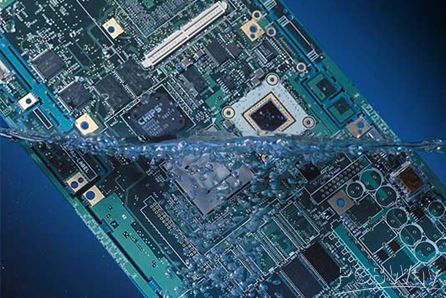The process validation of a PCBA (Printed Circuit Board Assembly) cleaning process is crucial to ensure that the cleaning process consistently meets quality and performance standards. Here are the steps involved in the PCBA cleaning process validation:
PCBA cleaning process validation is a critical aspect of quality control and ensures that the cleaning process consistently meets the required cleanliness and performance standards for electronic assemblies. It also provides the basis for ongoing process improvement and control.
- Define Validation Objectives:
- Clearly define the objectives of the cleaning process validation. Determine what specific aspects of the cleaning process you want to validate, such as cleaning effectiveness, cleanliness standards compliance, or process repeatability.
- Document the Cleaning Process:
- Document the entire cleaning process, including all relevant parameters and steps. This should include details on cleaning chemicals, cleaning equipment, cleaning duration, temperature, pressure, and any other critical variables.
- Select Representative Samples:
- Identify representative PCBAs that will be used for validation testing. These PCBAs should reflect the typical components, materials, and contamination levels encountered in your production process.
- Establish Acceptance Criteria:
- Define the acceptance criteria or standards that the cleaning process must meet. This could include cleanliness standards, residue limits, and performance requirements for the PCBAs.
- Validation Testing:
- Perform validation testing using the selected representative samples. There are several types of tests that may be performed:
- Cleanliness Testing: Conduct cleanliness testing to measure the level of residue or contaminants on the PCBAs. Common methods include ion chromatography, ionography, surface insulation resistance (SIR) testing, and visual inspection.
- Performance Testing: Evaluate the functionality and reliability of the PCBAs after cleaning. This may involve functional testing, electrical testing, and accelerated aging tests to ensure that the cleaning process does not negatively affect component performance.
- Process Capability Studies: Conduct process capability studies to assess the stability, repeatability, and capability of the cleaning process. Statistical tools such as Cp, Cpk, and control charts can be used for this purpose.
- Environmental Testing: Assess the environmental impact of the cleaning process, including waste disposal and any potential harm to personnel or the environment.
- Perform validation testing using the selected representative samples. There are several types of tests that may be performed:
- Data Collection and Analysis:
- Collect data from the validation tests and analyze the results against the established acceptance criteria. Determine whether the cleaning process consistently meets the defined standards.
- Process Optimization (if necessary):
- If the validation testing reveals that the cleaning process does not meet the acceptance criteria, identify areas for improvement and optimize the process. This may involve adjustments to cleaning parameters, chemicals, equipment, or procedures.
- Documentation:
- Maintain comprehensive documentation of the validation process, including test results, data analysis, process changes, and any corrective actions taken.
- Validation Report:
- Compile all the validation data and findings into a formal validation report. This report should summarize the validation activities, results, conclusions, and any recommendations for ongoing monitoring and control.
- Ongoing Monitoring and Control:
- After successful validation, implement ongoing monitoring and control measures to ensure that the cleaning process continues to meet the defined standards. Regularly review and update the cleaning process as needed based on performance data.
- Regulatory Compliance (if applicable):
- Ensure that the PCBA cleaning process validation complies with any industry-specific or regulatory requirements, such as IPC standards or environmental regulations.
- Training and Documentation:
- Train personnel involved in the cleaning process on the validated procedures and maintain records of training.
PCBA cleaning process validation is a critical aspect of quality control and ensures that the cleaning process consistently meets the required cleanliness and performance standards for electronic assemblies. It also provides the basis for ongoing process improvement and control.
|
Return to home page
|

